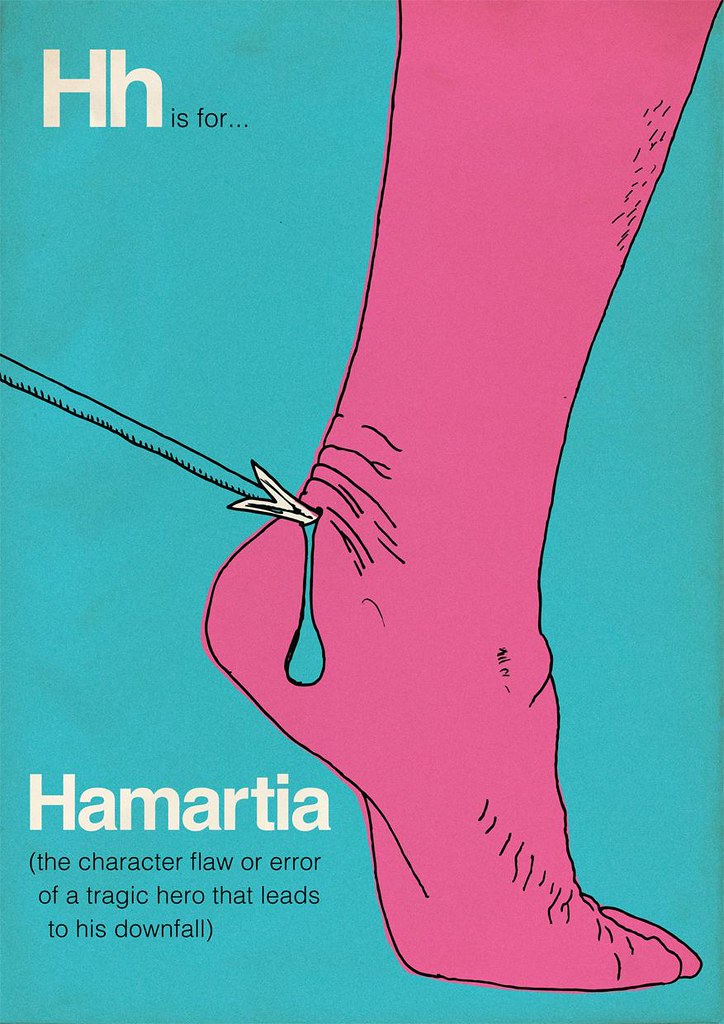Hamartia
Hamartia
Definition
A fatal flaw of a character that leads to the downfall of that character.
Example- from Canterbury Tales
“I’ll up and put my dagger through his back
While you and he are struggling as in game;
Then draw your dagger too and do the same.
Then all the money will be ours to spend” (227-230)
“They fell on him and slew him, two to one.
Then said the first of them when this was done,
‘Now for a drink. Sit down and let's be merry
For later on there’ll be a corpse to bury.’
And, as it happened, reaching for a sup,
He took a bottle full of poison up
And drank; and his companion, nothing loth,
Drank from it also, and they perished both.”
Function
In the example of The Pardoner’s Tale the characters allow greed to overtake them which eventually leads to a twist that results in their death. Greed is the fatal flaw of the characters and it leads to the death of the characters, which is the downfall. This allows the reader to pity the characters because of the result, but it also allows the reader to learn from the characters mistakes so that he/she does not do the same in their life.
Another example
“‘Oh, you are indeed, my love’ said Sméagol; and he caught Déagol by the throat and strangled him, because the gold looked so bright and beautiful. Then he put the ring on his finger.” (Tolkien 52)
Non-original mnemonic
Original mnemonic
Harmful
And
Mean
Attributes are
Reasons
Towards
Inevitable
Atrophy



